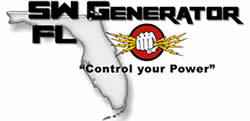Whole House Generator Installation
The whole house generator installation is a significant project that ensures your home remains powered during outages. Understanding the whole house generator installation process can help you prepare and make informed decisions. At SWFL Generator, we are southwest Florida’s premier residential and commercial generator installers. Contact us at (239) 222-1672 for expert guidance.
Initial Consultation and Assessment
The first step is to schedule a consultation with a professional installer. During this meeting, the installer assesses your home’s power needs and discusses your preferences. They consider factors like the size of your home, your power requirements, and your budget. This initial assessment helps determine the appropriate generator size and model.
Choosing the Right Generator
Based on the assessment, the installer recommends a generator that suits your needs. Generators come in various sizes and types, including standby and portable models. Standby generators are permanently installed and automatically start during an outage, providing seamless power. Portable generators are more affordable but require manual setup and operation.
Site Preparation
Once you’ve chosen a generator, the next step is site preparation. The installer selects an appropriate location for the generator, considering factors like proximity to fuel sources and access for maintenance. The site is then cleared, and a concrete pad is often poured to provide a stable base for the generator.
Electrical and Fuel Connections
The generator needs to be connected to your home’s electrical system and fuel source. An electrician installs a transfer switch, which automatically switches your home’s power source from the grid to the generator during an outage. This ensures that your essential appliances and systems remain operational. The fuel connection, whether natural gas, propane, or diesel, is also established at this stage.
Permits and Inspections
Depending on your location, you may need permits for the installation. The installer handles the permit application process, ensuring that all local codes and regulations are met. Once the installation is complete, an inspector may need to review the work to ensure it meets safety and code requirements.
Installing the Generator
With the site prepared and connections in place, the generator is ready for installation. The generator is positioned on the concrete pad and securely anchored. Electrical and fuel connections are finalized, and the system is tested to ensure everything is functioning correctly.
Testing and Commissioning
After installation, the generator undergoes thorough testing. The installer runs the generator to confirm that it switches on automatically during an outage and powers your home as expected. They also check for any potential issues and make necessary adjustments.
Training and Final Walkthrough
Once testing is complete, the installer provides a detailed walkthrough of the system. They explain how the generator works, including routine maintenance tasks and troubleshooting tips. This ensures you understand how to operate the generator and what to do in case of any issues.
Regular Maintenance
To keep your generator in top condition, regular maintenance is essential. This includes changing the oil and filters, checking the battery, and inspecting the fuel system. At SWFL Generator, we offer maintenance services to ensure your generator remains reliable and ready for use.
Conclusion
In conclusion, Installing a whole house generator involves several critical steps, from initial assessment to final testing. Each stage is important to ensure the system operates smoothly and provides reliable power during outages. At SWFL Generator, we are committed to providing top-quality installation services in southwest Florida. Contact us at (239) 222-1672 for professional installation and maintenance services. We are here to ensure your home remains powered and protected, providing peace of mind and comfort during power outages.


